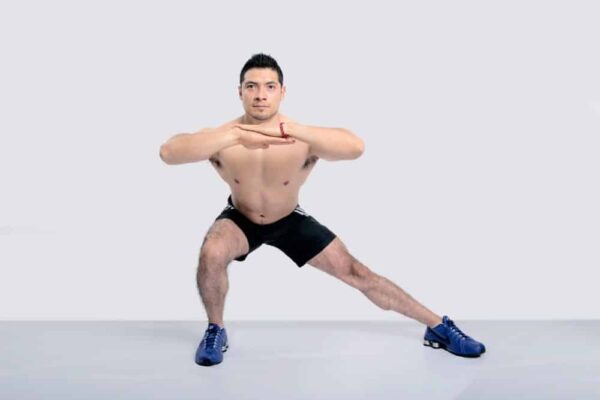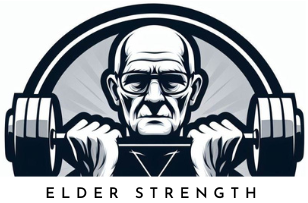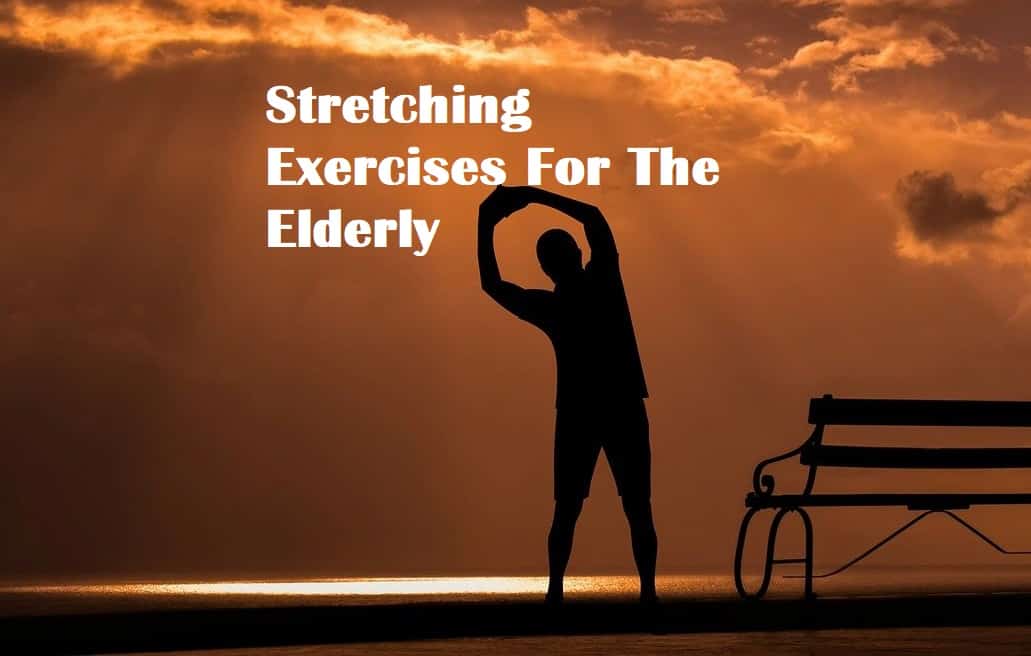In this article, you will talk about stretching exercises for the elderly. As you get older stretching becomes very important.
As we get older, our ligaments, tendons, and other connective tissues lose elasticity just like our skin.
Adequate elasticity of these tissues is crucial for the normal function of all your joints and back. Lack of elasticity will lead to a lack in the range of motion of your joints. This will in turn prevent your muscles from working correctly. Which can lead to a dysfunctional joint that gets inflamed.
A typical example of this is a sore knee. In many cases, the joint is just the symptom of an underlying problem in mobility and strength of your leg muscles. If you improve mobility and strength, the joint starts to work correctly and the pain and inflammation subside.
Even if you don’t have significant dysfunction in any joint, lack of mobility will limit your strength significantly and make you more prone to injuries in case of sudden exertion (like lifting something heavy). And more prone to injuries in case of accidents like slipping and falling.
For example, it’s much easier to pull your back or hamstring if don’t have good mobility and strength. Good mobility is important for fall prevention for seniors.
So how do you improve mobility and increase the elasticity of our connective tissues? With stretching of course. Stretching is just the first part of the equation. It improves mainly passive mobility.
The next step is to increase active mobility, which you can achieve with a full range of motion strength training.
Why Stretching Is Important For The Elderly
As we established a moment ago, you lose elasticity in your connective tissues as you get older. You also lose muscle mass and strength due to natural hormonal and metabolic changes.
To live a healthy active life as an older adult you need to fight this loss in connective tissue elasticity and muscle to the best of your ability. It just so happens the two are very much connected.
To have good active mobility requires a certain amount of strength. And to have usable strength you definitely need good mobility.
Having issues with mobility and flexibility will lead to problems in how your joints function, how you can produce strength, how will your body reacts to sudden jerks, and other accidents and it will even affect your balance negatively.
Mobility can be divided into passive and active mobility. Passive mobility is the mobility someone else can move your joint. Think about a physical therapist or a doctor moving your leg while you lay still.
The range of motion your leg can achieve is passive mobility. Passive mobility can also be thought of as the range you can stretch your joint without using muscles to pull you into the position.
Active mobility means the mobility of a joint you can achieve with your own muscles. This is usually lower than passive mobility. Active mobility is very important for the healthy function of the joints.
If you have restrictive connective tissues on the other side of the joint, the muscles of that side will also be weak. This can pull the joint into slight misalignment, which will over time cause inflammation, pain, and abrasion of the joint.

Reduce Pain With Stretching
A typical example of this is an older person who sits a lot and doesn’t do many activities that use the full range of motion of the knee and hip joints. They will get a pain in one or both knees when walking down the stairs for example.
They will likely have very weak hamstrings and glutes from all the sitting. They can have relatively strong quads and hip flexors, but both will be tight due to all the sitting.
This creates an imbalance in the knee joint that pulls the knee cap out of alignment. This is called patellofemoral syndrome and it is the most common reason for knee pain.
It can often be fixed with simple physical exercises that strengthen the muscles that affect the knee joint and by improving mobility. This is always a better option than resorting to knee support braces.
It pains like these that can prevent older people from moving freely, especially for longer distances. If you keep your mobility and strength good, you can avoid problems like these altogether.
Mobility is also very important for spinal health. As we get older our spine tends to hunch over because of the lost strength but also due to structural changes in the discs of the spine.
This can cause you many problems like sciatica and chronic back pain. Having good mobility and strength in your back will help to prevent this effect of aging as well. Once again a better option than a back brace or a posture corrector.
As you can see, having good mobility is very important for your overall health and freedom in old age. Stretching is the place to start improving your mobility before you start stretching your muscles with a full range of motion strength training.
Dynamic Vs. Static Stretching
Stretching can be divided into two categories; Static and dynamic. Static stretching means that you stretch your joint gradually to an extended position.
You then hold that position for several seconds and if it feels comfortable you can extend it even more. You then slowly return to a neutral position.
Static stretching is best done with warm muscles after exercise but it is also great for improving sore muscles and reducing stress and tension when done before bed at night for example. Static stretching is more gentle and it’s easier to go by feel.
For the elderly static stretching is perfect for improving passive mobility and for preparing the connective tissues and muscles for strength training.
Dynamic Stretching Exercises For The Elderly
Dynamic stretching consists of several repeated movements that take the join to the limit of its range of motion while simultaneously activating the muscles of that joint.
Typical examples of dynamic stretches are jumping jacks, lunges, and squats. They take your joints to the limits of the range of motion. While simultaneously activating and preparing them for the upcoming exercise or work.
Dynamic stretching is actually best used as a warp-up to exercise. This is because it quickly increases the joint’s range of motion, making you more limber.
It also activates the muscles you will be using, preventing injuries and increasing force production. Dynamic stretching also improves your coordination, balance, and body awareness.
For the elderly dynamic stretching should only be used on very few selected occasions when good mobility is already achieved with static stretching.
This is because the loss of elasticity in the connective tissues makes you more prone to injuries during sudden stretches and jerks. Which dynamic stretches essentially are.
Now let’s look at some stretching exercises that are suitable for older adults. Always remember to consult your physician before starting a new stretching routine, just in case you have some health-related disability that prevents you from doing these exercises safely.
Lower Body Stretching Exercises For The Elderly
Here’s a great stretching routine by AdvocateHealthCare for the lower body. This routine will stretch every major muscle in your lower body and lower back. (YouTube embed. Content not created or owned by ElderStrength.com):
You can learn more about stretching the lower body in the articles Hamstring Stretches For Seniors [Quick Guide] and 4 Simple Hip Stretches For Seniors.
Upper Body Stretching Exercises For The Elderly
This is a great gentle stretch routine for all your upper body muscles by More Life Health Seniors. It includes stretches for the neck, chest, shoulders, triceps, upper back, lower back, and wrists. (YouTube embed. Content not created or owned by ElderStrength.com).
You can learn more about stretches for the upper body in the articles Best Stretches For Seniors and The Elderly [Two Tips] and What is Chair Yoga For Seniors? [Introduction].
Conclusion
I hope you found these stretching exercises for the elderly useful and will incorporate them into your routine.
Always remember to start slowly and if you feel any pain or discomfort, stop immediately. If you are unsure about how to perform the stretching exercises, consult a trainer who can show you how to do them properly.
Stretching is not that hard and it’s very beneficial for your health. The best thing is that it makes you feel great when you stretch your whole body! So don’t be afraid to get started with a stretching routine today.
The best way to do these stretching exercises is every night before bed while watching TV for example. This way can focus on something else while doing long stretches.
If you do them daily, the routine doesn’t have to last very long. 5 to 10 minutes goes a long way and you will see great improvements within a week!
If you have any questions about the stretches or a routine, drop a comment below and we will promise to get back to you as soon as possible.
If you enjoy reading about strength training and health tips for the elderly, please subscribe to our newsletter and bookmark this site.
See you next time!
Elder Strength

